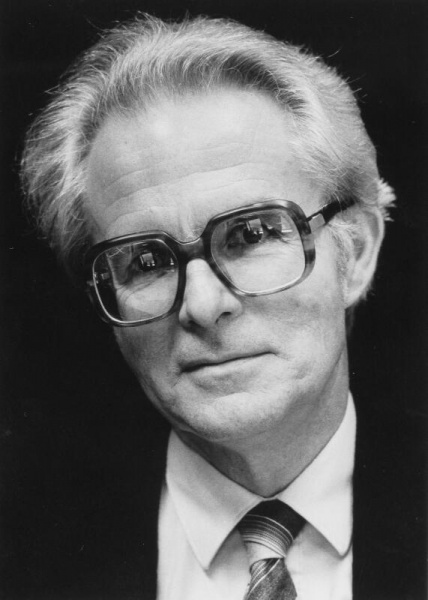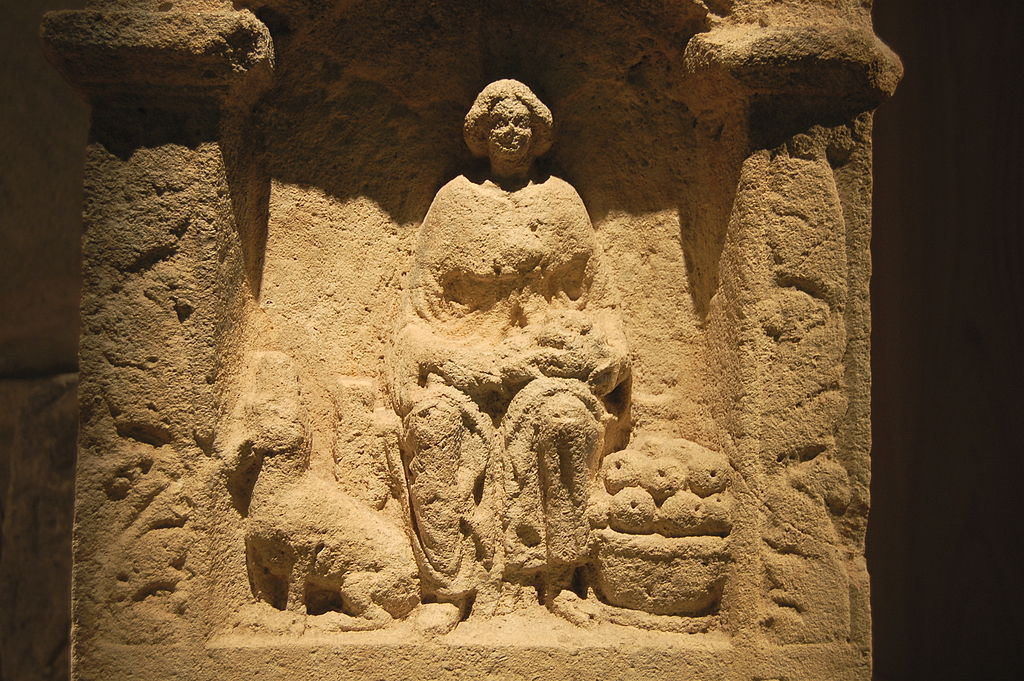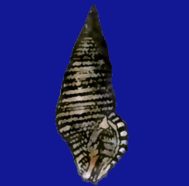In the previous blog we saw Tera and Pico moving permanently to De Wael and continue their work there. They become active in the Zeeland Society of Sciences and gather friends around them.

In 1965, the Zeeuws Genootschap (Society of Science) conceived the plan to write a Zeeland encyclopedia. Both Pico and Tera will be editors-in-chief. Chairman is Martinus Pieter de Bruin. De Bruin (1922-2013)(here on a photo), commonly referred to as Rinus, was a librarian and head of the Zeeland Documentation Center. He published many articles about Zeeland and Walcheren. Work on the encyclopedia will eventually take nearly fifteen years. Between 1982 and 1984 the encyclopedia is published in three thick volumes.
To finance the whole, the building on the Wagenaarstraat is sold and the collection of the Zeeuws Genootschap is merged with the collection of the Kunstmuseum, now together the Zeeuws Museum. The encyclopedia deals with the history of Zeeland, biographies of Zeelanders, maritime life, flora and fauna of Zeeland and much more. The encyclopedia of Zeeland can now be consulted online. Pico in particular has done a lot of work on it and traveled throughout the province by bus or bicycle. In 1984 when the work is finished, Pico is ninety years old.
In 1966, the paleontological work group of the Zeeland society was founded, of which Pico became chairman. Zeeland is an interesting area when it comes to fossils. Due to its location, the prehistoric soil layers are still locally on the surface, the land has only been formed in the past two million years. As a result, there is plenty to find. Tera is of course also interested in fossil shells. However, when the proposal comes to admit amateurs to the working group, Pico initially resists fiercely. Just like Tera at the time when the Malacological Society was founded, Pico now also believes that the determination of shells and other fossils should be left to the specialist biologists. When I spoke to Dick Dumon Tak in 2019, he told me that Tera and Pico were a bit of the old school in that area and that they no longer kept up with the times in the sixties.
Tera has been editor of Archief since 1968, the magazine of the Zeeuws Genootschap. She herself writes a number of extensive biographies of Zeeland biologists in Archive. First she writes about Job Baster (1711-1775), a physician and shell collector from Zierikzee, who lived in the eighteenth century and studied in Leiden. The magazine Basteria, of the Malacological Society is named after him, perhaps at Tera’s suggestion, but it is more likely that Cornelis Brakman came up with the title. Brakman is also one of the first to publish in Basteria, as early as 1936. Job Baster also stimulated others to do natural history research, including Martinus Slabber (1740-1835), mayor of Goes in the early nineteenth century, who as an amateur -zoologist in 1778 published a collection of eighteen volumes, each consisting of a color plate with accompanying text. Tera also writes a biography about Martinus Slabber.
Through the work on the Zeeland encyclopedia, Pico and Tera get to know all kinds of scientifically interested people. They organize a literary and scientific club in Domburg. This club meets at least once a month at De Wael, which thus becomes a scientific and cultural center in the village. In addition to Pico and Tera, the company includes Rinus de Bruin and his wife Gré. Dr. Rika Ghijsen (1884-1976), who also lives in Domburg and works on the Zeeland dialects, also belongs to the group. Rika is called Aunt Rika by almost everyone and, as a single woman, assists everyone with advice and action. Rika has known Tera for years and has been one of her best friends since before the war. Another member of the club is Professor Mia Gerhardt (1918-1988). From 1968 Mia had been extraordinary professor of comparative natural sciences at the University of Utrecht. Later in life she married a colleague, Professor J. Engels. However, that marriage was short-lived as her husband died suddenly in 1975. Mia retired and settled in Domburg in 1977. An avid shell collector, she became a member of the Malacological Society at Tera’s recommendation. One day, an acquaintance visits Pico and Tera and asks to look up Mia’s number in the telephone book to see if she is at home, to which Pico replies: “If you want to know if Mia is at home, it is better to consult the book of tides than the telephone book”. Mia Gerhardt is the younger sister of the famous poet Ida Gerhardt, with whom she does not have a good relationship. Piet Meertens (1899-1985) is also always present. Piet and Tera had met during the war. He was interested in Zeeland, in language and in dialects. He came to visit Tera in Amsterdam to look at the family papers of the van Benthem Jutting family. There he also met Rika Ghijsen, with whom he shared his love for language and for Zeeland. Piet was a best man at Tera and Pico’s wedding, and they remain friends. Piet Meertens suffers a cerebral hemorrhage in 1975 and is then admitted to a nursing home in Amstelveen. Pico and Tera must have visited him there. Typing with 1 finger, he still corresponds. When Pico turns ninety in 1982, Piet sends him a birthday card. Pico replies to thank and soberly observes that there are few peers who can still congratulate him. Piet Meertens dies in 1985. The company is completed by the local general practitioner, doctor F. Vaandrager (1907-?) and his wife. The younger guard is also regularly invited to join them such as Peter van Bree (1927-2011) who had been a student assistant for Pico, and eventually succeeded him as curator of mammals at the Zoological Museum, and Dick Dumon Tak (1936-) who had also been Pico’s assistant. Literary works in all modern languages circulate in the club, there is also a lot of discussion about science, subjects are diverse but always scientific in nature. If they can’t agree on things or don’t know something , Pico walks upstairs and returns with piles of books under his arm. Then they jointly look for what is known about the subject.
Pico likes to talk about the finds around the former Nehalennia temple, the foundations of which could still be seen at low tide far off the coast of Domburg. Many small altars and votive stones have been found, often with the same symbols: a rather plump goddess in an armchair, a dog beside her, a basket of apples on the other side. He also publishes about it.

My own childhood memories of Tera will be discussed in the next blog.
